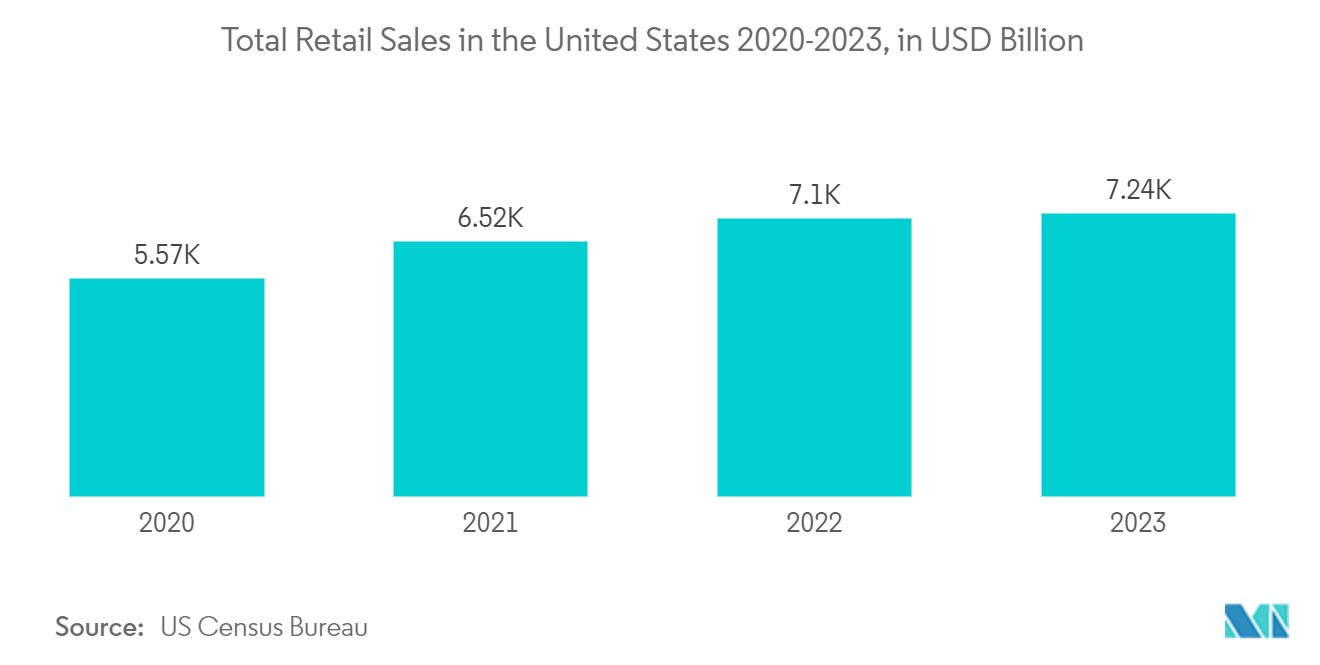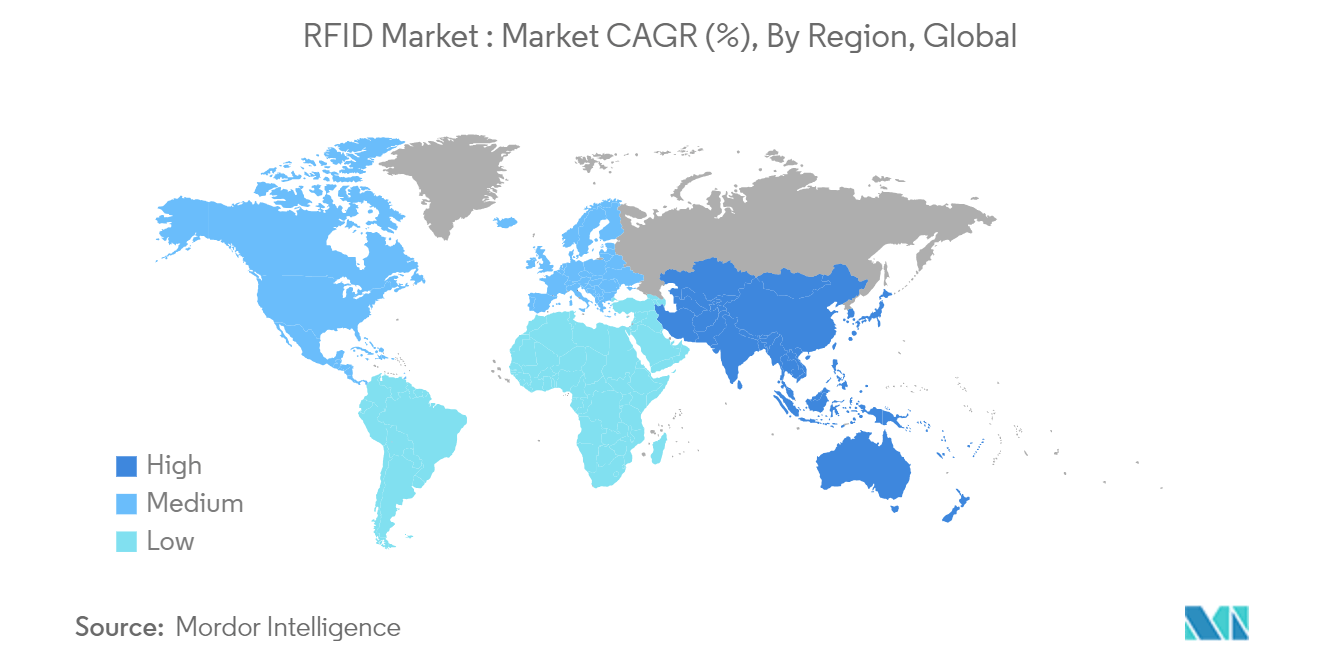Market Trends of RFID Industry
Retail Segment is Expected to Hold a Major Market Share
- RFID in retail involves the utilization of RFID tags on items that emit signals to RFID readers, which are then processed by the software, providing real-time results for transactions, stock taking, inventory levels, or individual customer purchase order history. RFID in retail eases the typical retail inventory process, which is manual, time-consuming, and only performed at predetermined intervals. Item tracking is one of the major applications that retailers use RFID. RFID in retail can also be used to prevent theft and track items that are usually moved and often misplaced.
- Several companies have adopted RFID as an approach to control inventories. Leaders include Zara, H&M, Target, Macy's, Uniqlo, Nike, Adidas, Lululemon, Footlocker, Levi's, Tommy Hilfiger, Ralph Lauren, and Victoria's Secret. E-commerce is fueling much of the adoption, with high inventory accuracy levels required to support processes like store fulfillment and BOPIS (buy online, pick up in-store).
- RFID-processed merchandise also makes factual data available to management. It may lead to smarter purchase decisions and give management better expense control, as inventory accuracy is crucial to lowering shrinkage, thus, better profits.
- Usage of RFID may improve overall merchandise management; accurate tracking of inventory and its location saves money. It also drives greater topline revenues, as it becomes easier to assure that sales are completed. Bottom line, adoption of the system ensures more profitable performance, as there is a more accurate accounting of the merchandise wherever it is stored.
- Retailers across the world have been making extensive use of RFID technology, especially in the Apparel business. The Canada-based company, Logistik Unicorp, has been using radio frequency identification as a tool to ensure that Canadian military uniforms are delivered swiftly, along with the guarantee of meeting strict quality requirements. It has been able to reduce the time required to ship goods by 35%. Such initiatives encourage new opportunities and developments and initiatives for RFID in the market and decrease the dependency on retail goods.
- Omnichannel retail strategies to meet the customers' needs on all sales channels became a priority for survival. RFID extended retailers' visibility of merchandise across the stores and the enterprise and distribution centers to meet ever-changing consumer demands.

Asia Pacific is Expected to be the Fastest Growing Market
- The Asia Pacific region is anticipated to hold a significant share of the market and is expected to witness significant growth over the forecast period. The rapidly increasing implementation and research work in the field of automation and a significant expansion of industry 4.0 have been driving the demand for RFID solutions in the region.
- The region's growth has been significantly driven by the increasing installation of these RFID systems in manufacturing units in order to improve productivity. The growing acceptance of electronic identity cards and RFID tags that are located in smart cards is also acting as a driver for the growth of the RFID market in the region.
- The expanding retail sector, along with the rising retailers' focus on embracing digital technologies in order to enhance the customer's shopping experience and optimize the warehouse management process, has also been one of the key factors contributing to the growth of the RFID market. RFID has been one of the efficient technologies used to handle goods and materials in the production environment.
- The expanding manufacturing landscape in the region, coupled with the increasing adoption of automation and Industrial Internet of Things (IIoT) solutions in the sector, has been propelling the market's growth. Also, the growing investments in asset management by organizations across various verticals and the rising need for contactless infrastructure coupled with government initiatives such as smart cities will further drive the growth of the market during the forecast period.
- Moreover, the public transportation sector is anticipated to be one of the areas in which the market is expected to expand over the forecast period. However, some restraints are limiting the growth of the market. The higher cost associated with installing RFID systems may challenge the market's growth. The device interoperability issues can also hinder the growth of the market over the forecasted period.
- Countries such as India are expected to witness a surge in the adoption of RFID technology as industries mature, and the COVID-19 pandemic is increasing the need for contactless solutions.


